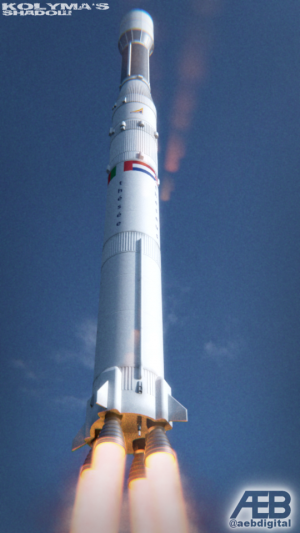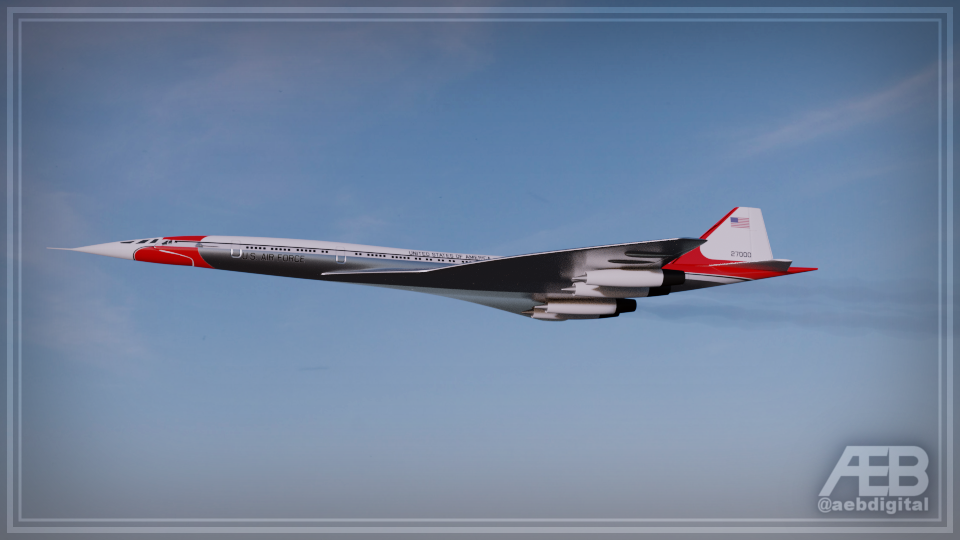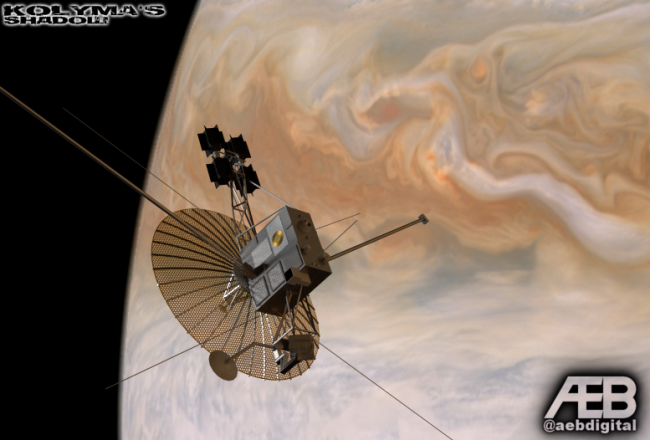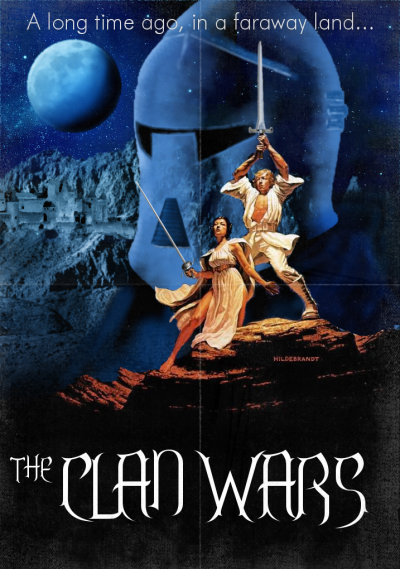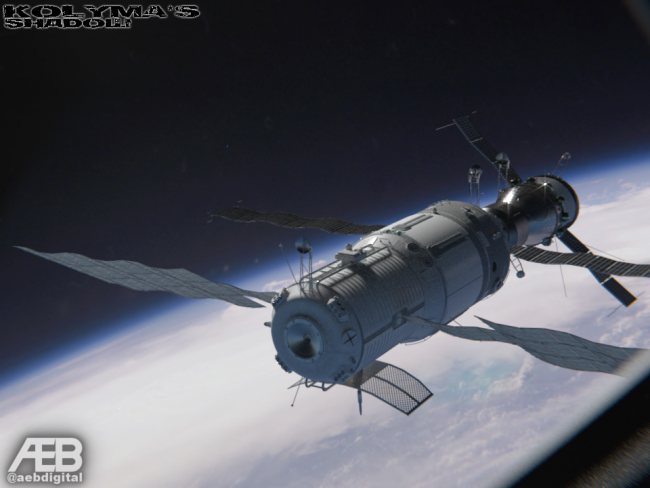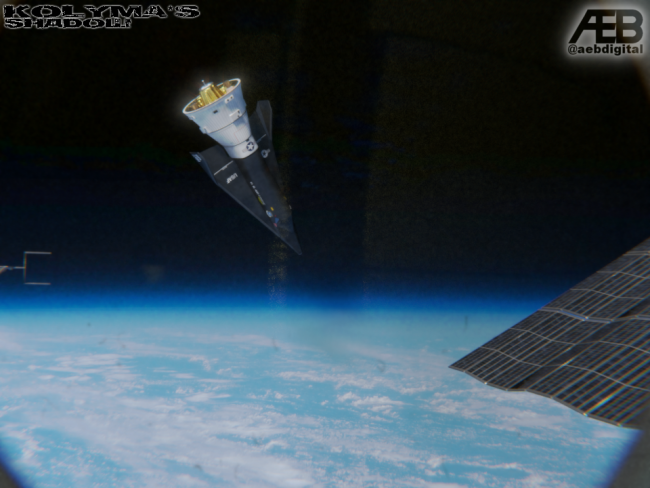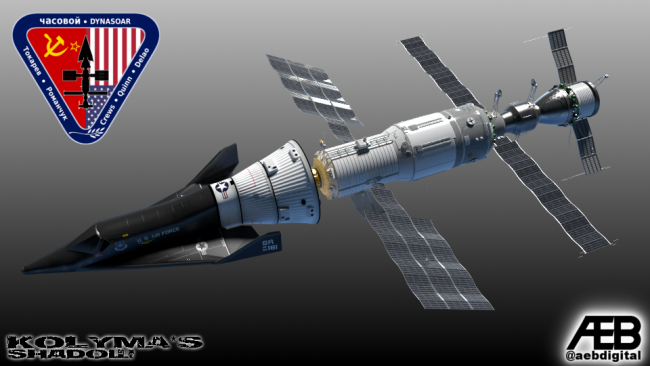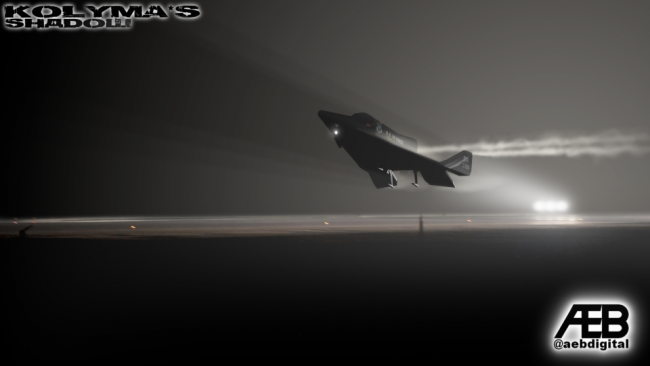Morning all. I’m afraid I’ve fallen a bit behind on responding to comments. I’ll try to catch up in the week, but in the meantime here is the next installment of...

Part IV Post#5: Planetary Pilgrimages
The relatively smooth progression of planetary exploration missions that America had launched under the auspices of NESSA in the 1960s was beginning to experience some bumps in the early 1970s. The first and most serious setback came in 1971, when the Mars Surveyor orbiter failed to light its engine and continued past the Red Planet in a repeat of the Pathfinder-1 mission four years earlier. Unlike the more recent Pathfinder missions, the Mars Surveyor had no twin to carry on in its stead, and so the disappointed scientists had to make do as best they could with a few readings grabbed as the probe swung by the planet and back into deep space.
Back on Earth, the next of the planned Surveyor missions, the ambitious Venus Radar Surveyor, was proving to be a lot more problematic than originally expected. In particular, the heavy power and sophisticated on-board computing requirements for its cloud-piercing radar were causing headaches, as was the robust thermal control system for the probe. By 1970 it was already clear that meeting the 1972 launch window was going to be extremely challenging, as costs expanded well beyond the original limits for a Surveyor-class mission. The failure of Mars Surveyor, with which the VRS shared a number of systems, was the final straw for a 1972 launch, and NESSA management officially confirmed a launch slip to the beginning of 1974. This relaxation of the schedule allowed the technical issues to be solved and, most importantly, fully tested. Ground testing was receiving a lot of attention following the loss of Mars Surveyor, with a renewed determination to ensure that the missions launched were as ready as they could be, even if it meant spending more time and money to safeguard the investment already made.
The growth in the cost of the VRS had knock-on effects for the rest of NESSA’s planetary programme. The original intent had been to launch Surveyor missions every 2-3 years (depending on launch windows), with the more expensive Pilgrim-class missions coming once every five years or so, and cheaper Pathfinders filling in various gaps. So far, the only Pilgrim mission had been 1970’s Pilgrim-1 lunar sample return mission, and NESSA had hoped to follow it up with a Mars lander in the mid-1970s before turning its eye towards the big opportunity of the decade, the so-called “Grand Tour” of the outer planets. First identified in the early 1960s, this mission would take advantage of a unique planetary alignment to make flybys of multiple outer planet targets by individual probes. Although flybys would normally be considered as Pathfinder-class missions, the extremely long duration of the mission (the probes would have to survive twelve years or more in space), as well as the desire for multiple probes to explore different targets, meant that NESSA had quickly bumped these up to the status of a Pilgrim-class mission, soon rebranded as the “Outer Planet Pilgrimage”.
By 1970 there had already been concerns that the demands of the Outer Planet Pilgrims would eat into allocations for the Mars lander. NESSA were proposing four separate probes for the OPP, with one pair to launch in 1976 and 1977 bound for Jupiter, Saturn and Pluto, whilst two more probes would depart for Jupiter, Uranus and Neptune in 1979. With the failure of Mars Surveyor, in 1971 NESSA confirmed the cancellation of the Mars Pilgrim, to be replaced by a second Mars Surveyor for a 1975 launch. This should have freed up sufficient funding for the full Planetary Pilgrimage, but the problems with the Venus Radar Explorer presented NESSA with some tough budgetary decisions in 1972. Unable to get an increase in funding from Congress, NESSA management elected to buy time by giving the go-ahead for just the first two Outer Planet Pilgrim spacecraft, to be ready for the 1976/7 opportunity. The hope was that funding for the second pair of probes could be found in the next couple of years, in time for their construction ahead of the 1979 launch window.
This hope in turn ran up against the second great celestial opportunity on NESSA’s radar: the return to the inner solar system of Halley’s Comet. Probably the most famous comet in history, Halley was expected to make a spectacular reappearance in the night’s sky as it approached perihelion in 1986. Almost from the agency’s inception, NESSA had highlighted Halley in its long range planning documents as a target of extreme interest, and they intended to make the most of it. The problem was that, in comparison to the planetary targets already visited, Halley was in an extremely energetic orbit. A conventional space probe on a flyby trajectory would pass the comet at a blistering relative speed of over 60 km/s, far too fast for the kind of extensive scientific measurements NESSA wanted to conduct during this literally once-in-a-lifetime opportunity. What was really wanted was a rendezvous mission, that would match the comet’s orbit and pace it as it rounded the sun and headed back out into deep space. Unfortunately, the massive delta-v requirements of such a mission were well beyond the scope of any conventional probe of useful size, even if it were launched on a Minerva-B24 moon rocket.
Undeterred, NESSA’s scientists and engineers proposed not one, but two options to meet this challenge. The first and most elegant was the solar sail, a huge, lightweight expanse of metallic foil that would use the pressure of solar photons to slowly accelerate it out of Earth orbit towards a rendezvous with the comet. By sailing on light, such a probe would expend no propellant, and so could remain with the comet for as long as its systems remained functional, or travel onwards to a second, or even third target.
The second option proposed was the ion drive. Studied in laboratories since the 1950s, this rocket engine would use electrical energy in place of chemical reactions to accelerate its propellant. In principle limited only by the power available, such an engine would have efficiencies far greater than chemical engines, or even the hypothetical nuclear thermal engines that had been briefly studied in the 1960s. By also taking advantage of a gravity assist from Jupiter, this would enable a probe of only modest mass to accelerate through the large delta-v needed for a rendezvous with Halley’s Comet.
Both proposals relied upon unproven new technologies. For the solar sail, the main questions were whether such a large, delicate structure could be reliably deployed and controlled in space. For the ion drive, was it even possible to build engines that would function reliably and continuously, day after day, for years at a time? If NESSA was going to rely on these technologies for a major mission, there was clearly considerable technological development to be done, which meant starting immediately, in the early 1970s. If selected, the ion powered probe would have to be launched in 1978 in order to perform a complicated transit via Jupiter to bring it into Halley’s high-inclination, retrograde solar orbit. Even the faster solar sail would need to be on its way by 1981, to first spiral in close to the sun before boosting itself towards a 1986 rendezvous.
In order to resolve these issues and make a final selection on the method to use, NESSA proposed to use two Pathfinder-class missions to perform a fly-off. To avoid possible schedule slips in these high-risk probes from being constrained by tight planetary launch windows, both were to aim for a target that wasn’t subject to significant orbital motions: the sun. The probes would spiral inwards to half the Earth-Sun distance, making close-in observations of our nearest star, whilst at the same time validating the technologies needed for the Halley encounter. The choice of target also played to the strengths of both propulsion systems by offering plentiful solar energy.
Authorised in 1971, the ion drive powered Pathfinder-4 was built in just 18 months at NESSA’s Pasadena affiliate, the Jet Propulsion Laboratory, and launched into an Earth-escape trajectory by a Minerva-20c rocket in February 1973. Once checked out by mission control in Houston, the ion engines were fired, and Pathfinder-4 began to gently shape its trajectory towards the target orbit. The drive used was an electrostatic device based upon pioneering work carried out in the late 1950s by physicist Harold Kaufman at the then-NACA Lewis Flight Propulsion Lab. The subject of thousands of hours of testing in vacuum chambers on Earth over the previous decade, this was the first time such a device had been used in space. Its performance proved to be just as spectacular as hoped, reaching a specific impulse of up to 2700s, a vast improvement on traditional chemical rockets. Concerns that the engine’s operation might interfere with the science instrumentation was also allayed, as Pathfinder-4’s electrostatic, electromagnetic and plasma field detectors were all able to operate nominally with the drive active, though some of the more sensitive detectors did show an improved performance with the drive off.
The principal problem found was with the endurance of the ion drive. Pathfinder-4 carried a single engine with a thrust of around 50 mN, which was intended to fire more or less continuously for six months to reach the final orbit. Unfortunately, after two months of operation, flight controllers observed the engine’s thrust beginning to drop. It was not a steady decline, and was even subject to brief increases before continuing its downward trend. By the end of the third month total thrust was down to 42 mN, where it remained for the next two weeks, before the engine suddenly cut off. Attempts to re-start it failed, and Houston was eventually forced to accept that the engine was dead, although they pointed out that science operations were continuing and were only marginally affected.
Engineers analysing the failure concluded that it was due to a weakness in one of the main electrostatic plates leading to a higher than expected rate of erosion, causing a “burn through” in one sector that then allowed the ion stream to impinge upon a poorly placed control wire. When the wire eventually severed, the engine was shut down. The analysts were however confident that this issue could be solved by improved quality control and a design change to the control wiring, as well as through the use of multiple redundant engines on the Halley probe. Whether they would get the chance to prove this depended in a large part on how Pathfinder-5 performed.
Approved at the same time as its ion-propelled sibling, Pathfinder-5 was the test mission for solar sailing. Planning at first to use a simple square sail around 10 000 square metres, the NESSA engineers had struggled to come up with a way of reliably deploying their design in zero gravity. Any such mechanism was virtually impossible to test on the ground, and so would have to be as simple and fool-proof as possible. Eventually, they decided upon the novel solution of dispensing with the square, monolithic sail and instead dividing the reflective area between a number of long, thin, blade-like sails. These could be rolled into dispensing drums for launch, after which the spacecraft would be given a spin such that each blade was deployed by centrifugal action. The final design called for two sets of four blades, with each set rotating in the opposite direction to balance angular momentum. The spin would help maintain the rigidity of the deployed “heliogyro”, whilst control of the spacecraft could be implemented through minor tilts in individual blades.
Complications in the deployment and control systems meant that Pathfinder-5 took longer to reach the launchpad than its sibling, finally being lofted by a Minerva-B20 in June 1974. Like Pathfinder-4, Pathfinder-5 was injected directly into a heliocentric orbit to ensure that a failure of the propulsion systems would not lead to a loss of scientific data. Once on its way, but still within a few light-seconds of Earth, the twin, four-blade barrels were commanded to spin up and deploy the sail. The deployment was complicated by the need to ensure that each blade spooled out at the same rate, to keep momentum balance, and there were several stops and starts as one blade or another exceeded the strict deployment speed limits programmed into the controller. Almost a day after the start of deployment, as the blades reached just over 750m in length, one of the spools on the A barrel stuck for good, bringing the entire deployment sequence to a halt. A few days later, deployment of the B barrel restarted, allowing its four blades to extend to their full 1250m length, but the A blades stayed at 750m, necessitating a faster spin to balance the momentum of the B blades.
As Pathfinder-5 continued its mission, the complications arising from this difference in spin rate were exacerbated by problems with the steering mechanism, as blade-twisting adjustments were found to cause waves to ripple along the blades, threatening a loss of control. This issue was manageable at first, and the probe was able to demonstrate some powered manoeuvres from pure photon energy, but when a control line snagged briefly three weeks into the mission it set up a ripple that led to a collision between blades on the A and B barrels. The delicate aluminised membranes and their complex control wires wrapped around each other in a dense knot, throwing the probe off-centre and causing more blades to tangle. Houston control quickly lost contact with the probe as it was smothered by its own sails.
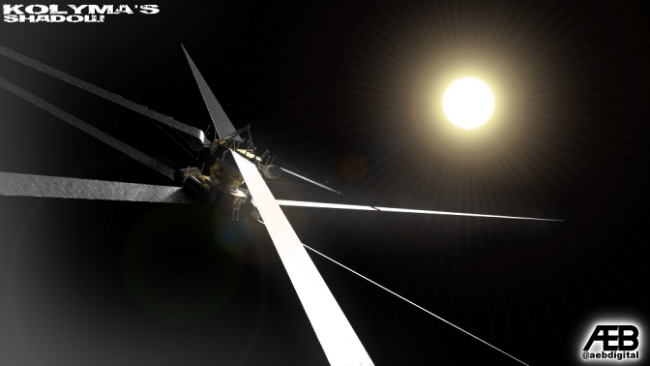
Pathfinder-5 deploys her solar sails.
With the results in from both Pathfinders, NESSA engineers were faced with a dilemma. Both proposed methods had suffered failures, with Pathfinder-5’s seemingly the more serious. However, use of a solar sail for Halley would mean launching in 1981, giving plenty of time to resolve the problems found. Pathfinder-4’s engine trouble on the other hand would have to be solved in time for a 1977 launch, now just three years away.
What finally tipped the decision in favour of the ion drive was the flexibility of the system compared to solar sailing. Large and delicate, solar sails were good candidates for rapid transits to distant objectives, but would be less useful for complex close-in manoeuvres such as those that might be experienced on an asteroid rendezvous or a mission to the moons of Mars. Their large size also made them impractical for Earth orbital use, as a fleet of such craft transiting between orbits would vastly increase the risk of collision. Also, their efficiency for more distant rendezvous missions in the outer solar system was severely limited by their dependence on sunlight. Ion drives on the other hand could be adapted to use other power sources, including nuclear fission. They could also find uses in satellite station keeping, extending the lifetime that could be squeezed from each kilo of propellant. This wider applicability is what led NESSA to confirm in early 1975 that the Halley Rendezvous Probe would be powered by a solar-electric ion drive. However, this announcement became somewhat lost in the noise, as NESSA was by then making headlines for other reasons.
The first was the steady stream of results from the long-delayed Venus Radar Surveyor. After arriving at the second planet in mid-1974, the VRS had settled into a polar orbit and began pinging the cloud-shrouded surface with radar pulses. Over the next eighteen months, the spacecraft gradually built up a global map of the planet, revealing a world largely free of the impact craters seen on the Moon and Mars, covered in a strange mix of rugged uplands, smooth plains, and curious domed features, nicknamed “coffee rings” by the investigating team because of their overlapping circular form, that looked almost artificial. The images would go on to spawn conspiracy theories of an alien base on Venus (which was no doubt in contact with the alleged Secret American/Nazi Moon Base), but a scientific consensus soon emerged that they were probably volcanic in nature. In addition to these radar results, infrared measurements detected a number of hotspots on the planet indicative of active volcanic eruptions, a hypothesis backed up by spectroscopic readings of increased sulphur products following large infrared emissions. The probe also spotted flashes of lightning in the atmosphere, completing the image of an exciting, dynamic world next door.
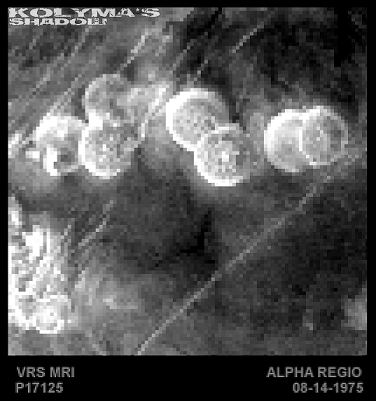
Venusian “Coffee Rings”, as imaged by the Venus Radar Surveyor in 1975.
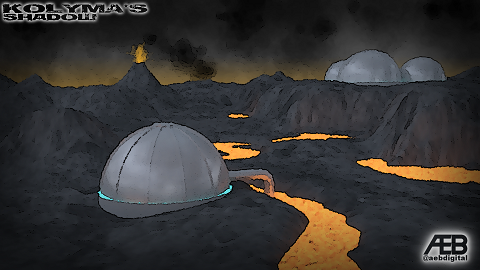
Some groups offered an alternative explanation for the circular formations on Venus.
Less positive were the headlines accompanying preparations for the launch of the first two Outer Planet Pilgrims. Despite having been given the more media-friendly names of Mayflower-1 and 2, many newspaper and TV reporters chose to focus on two more controversial aspects of the project: its budget-busting price tag, and, more emotively, the use of plutonium dioxide as a power source. In the dim, distant outer reaches of the solar system that the Mayflowers were intended to explore, solar panels simply weren’t feasible, whilst the extremely long duration of the mission (up to twelve years) necessitated a power source of equal longevity. The only practical solution was nuclear, and so each Mayflower probe was equipped with twin Radioisotope Thermal Generators (RTGs) generating a total of 500W of electrical power. Environmental issues were gaining more visibility as the 1970s progressed (ironically, partly thanks to the work of NESSA’s own fleet of Earth observation satellites), and coming hot on the heels of a major incident at the Oyster Creek nuclear power station in November 1975, the launch of Mayflower-1 on 27th July 1976 drew a considerable crowd of demonstrators. Fortunately for everyone, the Minerva-B20c launch passed off without a hitch, projecting the 850kg probe towards its rendezvous with Jupiter. Just over a year later, on 30th August 1977, its twin Mayflower-2 spacecraft enjoyed a similarly trouble-free launch. Coming just two months after Congress had approved the funding needed to complete the follow-on Mayflower-3 and -4 probes, the mood in Houston was one of euphoria. America’s grand tour of the outer planets had begun.

Part IV Post#5: Planetary Pilgrimages
The relatively smooth progression of planetary exploration missions that America had launched under the auspices of NESSA in the 1960s was beginning to experience some bumps in the early 1970s. The first and most serious setback came in 1971, when the Mars Surveyor orbiter failed to light its engine and continued past the Red Planet in a repeat of the Pathfinder-1 mission four years earlier. Unlike the more recent Pathfinder missions, the Mars Surveyor had no twin to carry on in its stead, and so the disappointed scientists had to make do as best they could with a few readings grabbed as the probe swung by the planet and back into deep space.
Back on Earth, the next of the planned Surveyor missions, the ambitious Venus Radar Surveyor, was proving to be a lot more problematic than originally expected. In particular, the heavy power and sophisticated on-board computing requirements for its cloud-piercing radar were causing headaches, as was the robust thermal control system for the probe. By 1970 it was already clear that meeting the 1972 launch window was going to be extremely challenging, as costs expanded well beyond the original limits for a Surveyor-class mission. The failure of Mars Surveyor, with which the VRS shared a number of systems, was the final straw for a 1972 launch, and NESSA management officially confirmed a launch slip to the beginning of 1974. This relaxation of the schedule allowed the technical issues to be solved and, most importantly, fully tested. Ground testing was receiving a lot of attention following the loss of Mars Surveyor, with a renewed determination to ensure that the missions launched were as ready as they could be, even if it meant spending more time and money to safeguard the investment already made.
The growth in the cost of the VRS had knock-on effects for the rest of NESSA’s planetary programme. The original intent had been to launch Surveyor missions every 2-3 years (depending on launch windows), with the more expensive Pilgrim-class missions coming once every five years or so, and cheaper Pathfinders filling in various gaps. So far, the only Pilgrim mission had been 1970’s Pilgrim-1 lunar sample return mission, and NESSA had hoped to follow it up with a Mars lander in the mid-1970s before turning its eye towards the big opportunity of the decade, the so-called “Grand Tour” of the outer planets. First identified in the early 1960s, this mission would take advantage of a unique planetary alignment to make flybys of multiple outer planet targets by individual probes. Although flybys would normally be considered as Pathfinder-class missions, the extremely long duration of the mission (the probes would have to survive twelve years or more in space), as well as the desire for multiple probes to explore different targets, meant that NESSA had quickly bumped these up to the status of a Pilgrim-class mission, soon rebranded as the “Outer Planet Pilgrimage”.
By 1970 there had already been concerns that the demands of the Outer Planet Pilgrims would eat into allocations for the Mars lander. NESSA were proposing four separate probes for the OPP, with one pair to launch in 1976 and 1977 bound for Jupiter, Saturn and Pluto, whilst two more probes would depart for Jupiter, Uranus and Neptune in 1979. With the failure of Mars Surveyor, in 1971 NESSA confirmed the cancellation of the Mars Pilgrim, to be replaced by a second Mars Surveyor for a 1975 launch. This should have freed up sufficient funding for the full Planetary Pilgrimage, but the problems with the Venus Radar Explorer presented NESSA with some tough budgetary decisions in 1972. Unable to get an increase in funding from Congress, NESSA management elected to buy time by giving the go-ahead for just the first two Outer Planet Pilgrim spacecraft, to be ready for the 1976/7 opportunity. The hope was that funding for the second pair of probes could be found in the next couple of years, in time for their construction ahead of the 1979 launch window.
This hope in turn ran up against the second great celestial opportunity on NESSA’s radar: the return to the inner solar system of Halley’s Comet. Probably the most famous comet in history, Halley was expected to make a spectacular reappearance in the night’s sky as it approached perihelion in 1986. Almost from the agency’s inception, NESSA had highlighted Halley in its long range planning documents as a target of extreme interest, and they intended to make the most of it. The problem was that, in comparison to the planetary targets already visited, Halley was in an extremely energetic orbit. A conventional space probe on a flyby trajectory would pass the comet at a blistering relative speed of over 60 km/s, far too fast for the kind of extensive scientific measurements NESSA wanted to conduct during this literally once-in-a-lifetime opportunity. What was really wanted was a rendezvous mission, that would match the comet’s orbit and pace it as it rounded the sun and headed back out into deep space. Unfortunately, the massive delta-v requirements of such a mission were well beyond the scope of any conventional probe of useful size, even if it were launched on a Minerva-B24 moon rocket.
Undeterred, NESSA’s scientists and engineers proposed not one, but two options to meet this challenge. The first and most elegant was the solar sail, a huge, lightweight expanse of metallic foil that would use the pressure of solar photons to slowly accelerate it out of Earth orbit towards a rendezvous with the comet. By sailing on light, such a probe would expend no propellant, and so could remain with the comet for as long as its systems remained functional, or travel onwards to a second, or even third target.
The second option proposed was the ion drive. Studied in laboratories since the 1950s, this rocket engine would use electrical energy in place of chemical reactions to accelerate its propellant. In principle limited only by the power available, such an engine would have efficiencies far greater than chemical engines, or even the hypothetical nuclear thermal engines that had been briefly studied in the 1960s. By also taking advantage of a gravity assist from Jupiter, this would enable a probe of only modest mass to accelerate through the large delta-v needed for a rendezvous with Halley’s Comet.
Both proposals relied upon unproven new technologies. For the solar sail, the main questions were whether such a large, delicate structure could be reliably deployed and controlled in space. For the ion drive, was it even possible to build engines that would function reliably and continuously, day after day, for years at a time? If NESSA was going to rely on these technologies for a major mission, there was clearly considerable technological development to be done, which meant starting immediately, in the early 1970s. If selected, the ion powered probe would have to be launched in 1978 in order to perform a complicated transit via Jupiter to bring it into Halley’s high-inclination, retrograde solar orbit. Even the faster solar sail would need to be on its way by 1981, to first spiral in close to the sun before boosting itself towards a 1986 rendezvous.
In order to resolve these issues and make a final selection on the method to use, NESSA proposed to use two Pathfinder-class missions to perform a fly-off. To avoid possible schedule slips in these high-risk probes from being constrained by tight planetary launch windows, both were to aim for a target that wasn’t subject to significant orbital motions: the sun. The probes would spiral inwards to half the Earth-Sun distance, making close-in observations of our nearest star, whilst at the same time validating the technologies needed for the Halley encounter. The choice of target also played to the strengths of both propulsion systems by offering plentiful solar energy.
Authorised in 1971, the ion drive powered Pathfinder-4 was built in just 18 months at NESSA’s Pasadena affiliate, the Jet Propulsion Laboratory, and launched into an Earth-escape trajectory by a Minerva-20c rocket in February 1973. Once checked out by mission control in Houston, the ion engines were fired, and Pathfinder-4 began to gently shape its trajectory towards the target orbit. The drive used was an electrostatic device based upon pioneering work carried out in the late 1950s by physicist Harold Kaufman at the then-NACA Lewis Flight Propulsion Lab. The subject of thousands of hours of testing in vacuum chambers on Earth over the previous decade, this was the first time such a device had been used in space. Its performance proved to be just as spectacular as hoped, reaching a specific impulse of up to 2700s, a vast improvement on traditional chemical rockets. Concerns that the engine’s operation might interfere with the science instrumentation was also allayed, as Pathfinder-4’s electrostatic, electromagnetic and plasma field detectors were all able to operate nominally with the drive active, though some of the more sensitive detectors did show an improved performance with the drive off.
The principal problem found was with the endurance of the ion drive. Pathfinder-4 carried a single engine with a thrust of around 50 mN, which was intended to fire more or less continuously for six months to reach the final orbit. Unfortunately, after two months of operation, flight controllers observed the engine’s thrust beginning to drop. It was not a steady decline, and was even subject to brief increases before continuing its downward trend. By the end of the third month total thrust was down to 42 mN, where it remained for the next two weeks, before the engine suddenly cut off. Attempts to re-start it failed, and Houston was eventually forced to accept that the engine was dead, although they pointed out that science operations were continuing and were only marginally affected.
Engineers analysing the failure concluded that it was due to a weakness in one of the main electrostatic plates leading to a higher than expected rate of erosion, causing a “burn through” in one sector that then allowed the ion stream to impinge upon a poorly placed control wire. When the wire eventually severed, the engine was shut down. The analysts were however confident that this issue could be solved by improved quality control and a design change to the control wiring, as well as through the use of multiple redundant engines on the Halley probe. Whether they would get the chance to prove this depended in a large part on how Pathfinder-5 performed.
Approved at the same time as its ion-propelled sibling, Pathfinder-5 was the test mission for solar sailing. Planning at first to use a simple square sail around 10 000 square metres, the NESSA engineers had struggled to come up with a way of reliably deploying their design in zero gravity. Any such mechanism was virtually impossible to test on the ground, and so would have to be as simple and fool-proof as possible. Eventually, they decided upon the novel solution of dispensing with the square, monolithic sail and instead dividing the reflective area between a number of long, thin, blade-like sails. These could be rolled into dispensing drums for launch, after which the spacecraft would be given a spin such that each blade was deployed by centrifugal action. The final design called for two sets of four blades, with each set rotating in the opposite direction to balance angular momentum. The spin would help maintain the rigidity of the deployed “heliogyro”, whilst control of the spacecraft could be implemented through minor tilts in individual blades.
Complications in the deployment and control systems meant that Pathfinder-5 took longer to reach the launchpad than its sibling, finally being lofted by a Minerva-B20 in June 1974. Like Pathfinder-4, Pathfinder-5 was injected directly into a heliocentric orbit to ensure that a failure of the propulsion systems would not lead to a loss of scientific data. Once on its way, but still within a few light-seconds of Earth, the twin, four-blade barrels were commanded to spin up and deploy the sail. The deployment was complicated by the need to ensure that each blade spooled out at the same rate, to keep momentum balance, and there were several stops and starts as one blade or another exceeded the strict deployment speed limits programmed into the controller. Almost a day after the start of deployment, as the blades reached just over 750m in length, one of the spools on the A barrel stuck for good, bringing the entire deployment sequence to a halt. A few days later, deployment of the B barrel restarted, allowing its four blades to extend to their full 1250m length, but the A blades stayed at 750m, necessitating a faster spin to balance the momentum of the B blades.
As Pathfinder-5 continued its mission, the complications arising from this difference in spin rate were exacerbated by problems with the steering mechanism, as blade-twisting adjustments were found to cause waves to ripple along the blades, threatening a loss of control. This issue was manageable at first, and the probe was able to demonstrate some powered manoeuvres from pure photon energy, but when a control line snagged briefly three weeks into the mission it set up a ripple that led to a collision between blades on the A and B barrels. The delicate aluminised membranes and their complex control wires wrapped around each other in a dense knot, throwing the probe off-centre and causing more blades to tangle. Houston control quickly lost contact with the probe as it was smothered by its own sails.

Pathfinder-5 deploys her solar sails.
With the results in from both Pathfinders, NESSA engineers were faced with a dilemma. Both proposed methods had suffered failures, with Pathfinder-5’s seemingly the more serious. However, use of a solar sail for Halley would mean launching in 1981, giving plenty of time to resolve the problems found. Pathfinder-4’s engine trouble on the other hand would have to be solved in time for a 1977 launch, now just three years away.
What finally tipped the decision in favour of the ion drive was the flexibility of the system compared to solar sailing. Large and delicate, solar sails were good candidates for rapid transits to distant objectives, but would be less useful for complex close-in manoeuvres such as those that might be experienced on an asteroid rendezvous or a mission to the moons of Mars. Their large size also made them impractical for Earth orbital use, as a fleet of such craft transiting between orbits would vastly increase the risk of collision. Also, their efficiency for more distant rendezvous missions in the outer solar system was severely limited by their dependence on sunlight. Ion drives on the other hand could be adapted to use other power sources, including nuclear fission. They could also find uses in satellite station keeping, extending the lifetime that could be squeezed from each kilo of propellant. This wider applicability is what led NESSA to confirm in early 1975 that the Halley Rendezvous Probe would be powered by a solar-electric ion drive. However, this announcement became somewhat lost in the noise, as NESSA was by then making headlines for other reasons.
The first was the steady stream of results from the long-delayed Venus Radar Surveyor. After arriving at the second planet in mid-1974, the VRS had settled into a polar orbit and began pinging the cloud-shrouded surface with radar pulses. Over the next eighteen months, the spacecraft gradually built up a global map of the planet, revealing a world largely free of the impact craters seen on the Moon and Mars, covered in a strange mix of rugged uplands, smooth plains, and curious domed features, nicknamed “coffee rings” by the investigating team because of their overlapping circular form, that looked almost artificial. The images would go on to spawn conspiracy theories of an alien base on Venus (which was no doubt in contact with the alleged Secret American/Nazi Moon Base), but a scientific consensus soon emerged that they were probably volcanic in nature. In addition to these radar results, infrared measurements detected a number of hotspots on the planet indicative of active volcanic eruptions, a hypothesis backed up by spectroscopic readings of increased sulphur products following large infrared emissions. The probe also spotted flashes of lightning in the atmosphere, completing the image of an exciting, dynamic world next door.

Venusian “Coffee Rings”, as imaged by the Venus Radar Surveyor in 1975.

Some groups offered an alternative explanation for the circular formations on Venus.
Less positive were the headlines accompanying preparations for the launch of the first two Outer Planet Pilgrims. Despite having been given the more media-friendly names of Mayflower-1 and 2, many newspaper and TV reporters chose to focus on two more controversial aspects of the project: its budget-busting price tag, and, more emotively, the use of plutonium dioxide as a power source. In the dim, distant outer reaches of the solar system that the Mayflowers were intended to explore, solar panels simply weren’t feasible, whilst the extremely long duration of the mission (up to twelve years) necessitated a power source of equal longevity. The only practical solution was nuclear, and so each Mayflower probe was equipped with twin Radioisotope Thermal Generators (RTGs) generating a total of 500W of electrical power. Environmental issues were gaining more visibility as the 1970s progressed (ironically, partly thanks to the work of NESSA’s own fleet of Earth observation satellites), and coming hot on the heels of a major incident at the Oyster Creek nuclear power station in November 1975, the launch of Mayflower-1 on 27th July 1976 drew a considerable crowd of demonstrators. Fortunately for everyone, the Minerva-B20c launch passed off without a hitch, projecting the 850kg probe towards its rendezvous with Jupiter. Just over a year later, on 30th August 1977, its twin Mayflower-2 spacecraft enjoyed a similarly trouble-free launch. Coming just two months after Congress had approved the funding needed to complete the follow-on Mayflower-3 and -4 probes, the mood in Houston was one of euphoria. America’s grand tour of the outer planets had begun.
Last edited:
